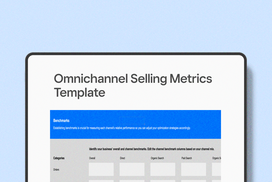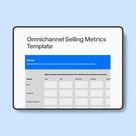What can your business do to handle an increase in customer demand?
With the customer mindset continuing to shift to more of a pre-pandemic approach to commerce, a range of businesses — from restaurants with a full slate of reservations to tattoo shops booked for months — have seen a rise in interest, demand, and expectations.
According to a recent report by the Wall Street Journal, April was the busiest month on the restaurant reservation platform Resy, and sign-ups for the site’s waitlist feature have risen by 50% since 2019. And despite a rise in interest rates, the Commerce Department reported strong retail sales for the start of the second quarter in 2022.
This can be great news for a business after years of challenges, leading to increased revenue and opportunity. But it can also put a strain on your staff and operations if you aren’t prepared. Here are some tips and tools for managing surges in business.
Streamline your store operations
Tightening up your store operations will help you control exactly when and where customers buy from you.
Offer more than one way for customers to buy
Reduce the odds that you get overwhelmed by experimenting with different ways of selling.
| Where you can sell your item or service: | How customers can receive their item or service: |
|---|---|
| Online store | In-store pickup |
| Social media accounts | Curbside pickup |
| In-store | Shipping |
| Curbside (or outside) | Delivery |
| Over the phone | Virtual experience |
Make sure you can take payments wherever you sell. If you want customers to order directly on Instagram or over text message, you could set up a quick online checkout link. Or if you want customers to call in orders, you’ll need to know how to accept credit card payments over the phone or have the right tools to invoice remotely.
Make it easy to buy in advance
Plan ahead by allowing customers to order in advance from your online store or by booking an appointment for a service or visit at a later date.
Let’s say you sell pottery kits three days a week. Tell customers when they can pre-order kits on those days, and be clear when they’ll be able to pick up or have their items delivered. This can help take some of the pressure off of managing inventory since you’ll know exactly what’s needed to fulfill those orders. It can also give you more time to order inventory, which is crucial if your industry is dealing with supply chain issues.
Another benefit of having more lead time is that it will allow you to set consistent employee schedules since you’ll have a better idea of when you’ll need help. A report from Branch found that 57% of hourly workers want more predictable schedules. It can also help your bottom line. An experiment at Gap retail stores found that stores with more stable schedules also saw a 7% rise in sales.
Create separate areas for each way you sell
It can be helpful to group people according to their needs.
For instance, you can move people through a pickup-only line much quicker since you’re focusing on one job instead of jumping between tasks. If you have a boutique, you could set up a quick-browsing section where item names and prices are clearly visible. This will let customers see what you have in stock and prevent this group from slowing down others.
Marking off a one-way route through each of these areas will also help speed things up.
Take advantage of extra space
If you have access to a parking lot, sidewalk, or parklet, you may want to use it. See if you need any special permits or permissions from local businesses before claiming it.
Once you know how you can use the space, define the moments when you could really use more room.
- Lines: Help customers line up in a designated, spaced-out area.
- Curbside pickup: An area where customers can park and receive pickup orders.
- Browsing: Help customers safely browse, whether through your store window, a special area of your store, or at an outside table.
- Spillover: You may want extra space when things get busy so customers can spread out without getting cramped in one spot.
Next, figure out the setup you need to use that location. You may have to purchase extra tables, signage, traffic cones, or other supplies to let customers know where they should be.
Streamline your team operations
Your customers’ first interactions are likely with your staff, so you want your team to feel confident about the changes you’re rolling out.
Staff up for critical store moments and purchase points
Where do customers interact with your employees? Think about where you need people stationed, and then staff appropriately.
Possible interactions:
- Checkout counter or other points of purchase
- Entrance, monitoring capacity
- Curbside pickup, running orders out
- On the floor, helping answer customer questions
- Fulfilling orders in the back
Talk to your team about the tradeoffs they’ll have to make to get people out quickly. You may want to prioritize checking out a customer over inviting someone to enter your store, since it means that person can reduce the time spent inside your business.
List out which tasks are higher priority so your team knows exactly what to do.
Train your team to operate at full capacity
When things get busy, you don’t want your team scrambling.
Train your team for all the different roles their job could entail so they can move around if schedules change or if things get busy. Discuss the issues they may deal with if things don’t go according to plan. What happens if customers can’t find a parking spot out front? Or if the order is wrong? List out worst-case scenarios and then create a plan for how you want your team to respond.
Evaluate and innovate
A surge in customer demand is also a great way to necessitate thinking about better ways to approach your business operations. Here are three places to start:
- Reconsider your hours: Are customers flocking to your restaurant for breakfast and lunch but not for dinner? Does your retail shop have regular dips in foot traffic at specific times of day? If you are having trouble increasing the size of your staff, make sure you are open at the right times for your business and your customers’ needs.
- Audit your offerings: Is there a time-consuming task or product you offer because it’s something you’ve always done? Regularly read through your business analytics using a tool such as Square Dashboard to make sure it’s worth the time and resources. If not, look for ways to switch things up.
- Reward loyalty: Emphasize to your staff the importance of valuing regulars and making them feel at home, even as your business changes with more customers. Returning customers are an essential part of a business, and loyalty programs are a simple way to reward customers who stick with you over time.
![]()







![How to Create a Marketing Budget [+ Free Templates]](https://images-cdn3.welcomesoftware.com/Zz1lNGYzNTcxOGQyOWYxMWVlYWMzNDQ2YmY1ZmIxNGIxZQ==?width=272&height=272)
![How to Create a Marketing Budget [+ Free Templates]](https://images-cdn3.welcomesoftware.com/Zz1lNGYzNTcxOGQyOWYxMWVlYWMzNDQ2YmY1ZmIxNGIxZQ==?width=136&height=136)

